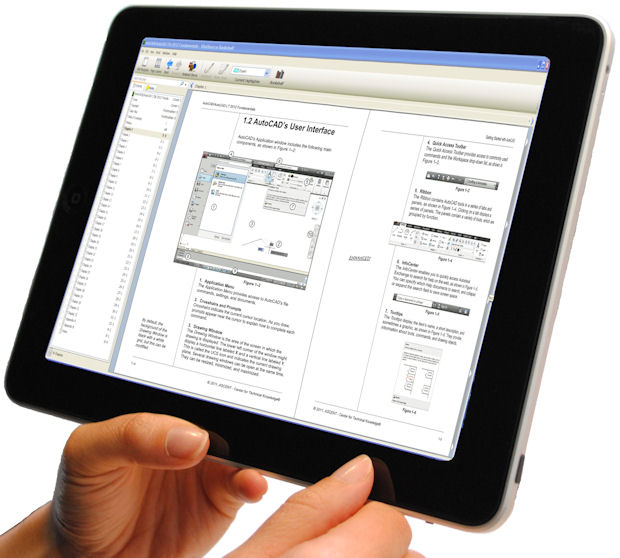Digital Training for Engineering Students

July 1, 2014
Faculty at Purdue University and Western Washington University faced a dilemma — how were their respective departments going to keep up with teaching techniques that accurately reflected today’s modern engineering workforce? More specifically, two professors wanted to change how they taught CATIA and Pro/ENGINEER.
With the ASCENT Center for Technical Knowledge, each program developed a curriculum that provided custom, relevant content in an easy-to-access format.
The Challenge
In order to learn the software, students found themselves needing to purchase physical textbooks. Aside from being expensive, professors felt that these books provided a finite amount of information and were not always current with the software.
“Students in our programs benefit from our state of the art labs. Unfortunately the software they work with evolves very quickly and physical textbooks have a hard time keeping up,” explains Nathan Hartman, assistant department head and associate professor of the Computer Graphics Technology program at Purdue.
In Washington State, Associate Professor and Manufacturing Engineering CAD/CAM Option Coordinator Derek Yip-Hoi felt the same way, but also was concerned about the environmental impact of textbooks. By going 100% digital, the program could reduce its carbon footprint, something the environmentally conscious university wanted to do.
The Solution
ASCENT offered two customized solutions for each university. Western Washington implemented eBooks and Purdue selected the ProductivityNOW portal.
The ProductivityNOW portal is a self-serve, online resource that allows students to access ASCENT’s courseware content. It includes hands-on exercises and video demonstrations to assist students learning software features. It is also interactive, allowing students to obtain and add tips, techniques and review frequently asked questions about the program. After Hartman had chosen the program, it took about 48 hours to set up the entire portal, and he was immediately able to start using it in his courses.
On the West Coast, Yip-Hoi discovered ASCENT eBooks during a demonstration at an engineering educators’ tradeshow. He then discussed options with ASCENT to develop a bundling of eBooks that students purchased through the campus bookstore.
With a bundling, students only needed to purchase one item for the course, instead of multiple manuals and guides. And even though most students didn’t have CATIA on their laptops, they could download the eBooks to a mobile device, laptop or tablet to access when convenient. Furthermore, students could still access the information after the course had ended.
The Results
Hartman and Yip-Hoi have noticed significant positive aspects of implementing ASCENT’s learning tools. Overall, they include a new convenient format, greater information speed, useful teaching aids and accelerated learning.
The information is more up-to-date than traditional methods since ASCENT works to update materials as the software itself evolves in the industry. It is also easily accessible anytime, anywhere, since the platforms are web-based, and also available for mobile devices.
With ProductivityNOW, students can access course materials at their own pace and availability. Hartman has also observed that while using the portal, his students are using CAD software in unrelated classes. This illustrates that students are able to learn faster and have a higher degree of confidence about their engineering software when learning about it at their own pace, he says.
With the eBooks, the platforms included advanced features for more detailed note taking of the course material. “There are some really nice features that ASCENT’s eBooks offer that paper-based courseware simply can’t,” says Yip-Hoi. “Searching for topics using the ‘table of contents’ pane is much faster and instantly takes students to the section on which they want to work. Students can ‘bookmark’ pages for rapid access to topics that are referenced often, make notes, highlight text for future reference and more. Notes and highlights can also be shared with other users.”
Not only did both solutions provide benefits for the professors, they positively impacted the larger campus community. At WWU, the bookstore only orders an eBook bundle when a student registers for a class. This way, managers are not left guessing about how many books to order, or left with excess inventory at the end of the semester.
In working with ASCENT, both schools were able to easily develop cutting-edge technical education software that helped multiple groups in the university community, from the students to professors and even the bookstore.
Subscribe to our FREE magazine, FREE email newsletters or both!
About the Author
Jess Lulka is a former associate editor for Digital Engineering. Contact her via [email protected].
Follow DE







